I try to write my posts as unbiased as possible and recommend the products I consider to be useful and the best. I use affiliate links, this means that–at no extra cost to you–I can make a commission on a purchase you make after clicking on them. As an Amazon Associate I earn from qualifying purchases.
Puppy Feeding Schedule:
Look at the chart, follow the tips!
Creating a healthy puppy feeding schedule is not only about nutrition. I’m a dog trainer, so I must tell you that food will be your number one communication tool with your pup. Use it wisely!
How many times a day should I feed my dog? That is your question.
It’s not only about “how many times”, it’s about “how” to feed your puppy too. When your puppy is between 2 to 4 months of age, he is going through his socialization period. This means that you have roughly 4-6 weeks to teach him important things about the human world! Using part of your puppy’s daily meal is a great way to do this and prevent overfeeding.
While your puppy keeps growing, it’s important to teach him basic manners, potty training, how to stay home alone (to prevent separation anxiety later on) and how to stay calm with visitors, among other things. Below you will find a puppy feeding chart by weight as well as how many times your puppy should eat depending on his age. Follow this chart to know the amount of food your puppy requires, then use the tips below to use some of that food to raise a well-mannered dog.
Let’s get on with feeding and training!
How much to feed a puppy by weight?
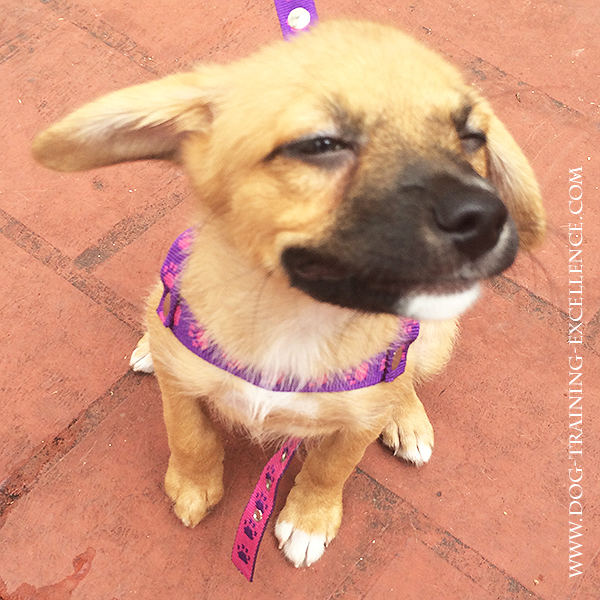
Before you figure out a puppy feeding schedule, you need to find out how much to feed a puppy by weight. Understanding the puppy feeding chart in dog food bags may be a little tricky. Some brands will show a chart letting you know how much to feed by age which is straight forward to understand. However, other brands will show a puppy feeding chart by weight. You need to read the label carefully, because sometime the chart does not mean the actual weight of your puppy but the future weight your puppy will grow into. This is because your puppy will eat the same amount of calories when he is a puppy as when he is an adult.
For example, if you have a French Bulldog puppy, he may weight 6 lb at 8 weeks of age. This puppy probably needs about 600 calories a day because he is growing. When this puppy grows into an adult dog, he will probably weight a little over 20 lb. At this age and size, he will ALSO need to eat around 600 calories a day. Even though he is a bigger dog, he does not need more calories because he is no longer growing.
That’s why some puppy feeding charts by weight need to be read carefully, it may mean the weight of the adult dog! If you have a breed dog, you can look up the average adult breed weight to make an estimated guess of your dog’s adult weight. If you adopted a mutt and know how big the parents are, you can do an estimate by averaging their weights. If you have no idea how big your dog is going to be, you can ask your veterinarian for dietary advice.
Puppy Feeding Chart by Weight
Puppy feeding schedule instructions
Note:
This amount is for dogs that have an average activity level. If your dog is a couch potato, he may need less food. If your dog is very active, he may need more.
Above is a puppy feeding chart by weight. To use it correctly, follow these steps:
Step 1: Determine your puppy’s adult weight.
Step 2: Use the adult weight to figure out the amount of calories your puppy needs per day in the chart below.
Step 3: Find the calories per serving in your dog’s food bag.
Step 4: Calculate how much of that serving your puppy needs per day to create your puppy feeding schedule.
Step 5: The best puppy feeding schedule is the one that takes into account socialization and training. This means that you will use part of each portion for these activities.
Puppy Feeding Chart by Age
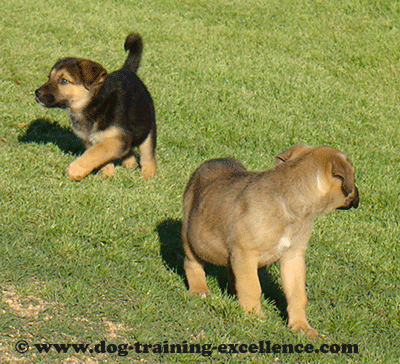
Now that you know how much to feed your dog, you can create a puppy feeding schedule by age.
It used to be common practice to adopt a puppy at 45 days because this is the time they are weaned from their mother’s milk. Recent studies in puppy development and behavior tell us that puppies need to be with their mom and siblings at least 2 additional weeks. This way the puppy starts learning important canine behaviors and his development is better. If you haven’t adopted your puppy yet, I recommend you bring your new puppy home between 56-60 days of age. If your puppy is a rescue and is no longer with mom and siblings, then adopt him right away.
Between 2-3 months of age puppies can graze at their food which can be available at all times, just make sure your puppy is eating enough but not too much. This is also socialization time, which means you need to introduce your puppy to as many things, people, dogs and experiences as possible. These experiences need to be positive and the best way to make something positive is to pair it with food.
Use part of the daily food when you take your puppy places, ask guests
to hand feed your puppy when they visit and always leave food inside
toys when you leave your puppy alone. For more information and
socialization exercises you can follow this link.
You can also
use part of the meal to reward your puppy for going potty in the correct
spot. Potty training should be 100% positive. Know when your puppy
needs to go potty, take him/her to the correct place and reward right
after he did his business. Simple! You will need patience too.
Between 4-6 months of age, you can start giving your puppy food 3 times a day. The socialization period starts closing between 3-4 months of age, so you can continue socializing your puppy throughout this period too. You may also want to teach your puppy some basic commands, and ask your puppy to sit politely to wait for his food and to greet people on the street.
After 6 months of age, you can start feeding your puppy twice a day (unless your vet recommends otherwise). Puppies this age are very active and need a lot of play time and exercise. One way to provide this is to include slow feeder dog bowls and interactive dog toys in your puppy feeding schedule. This way, your puppy has to think and play while eating! You can continue to use part of his daily meals to teach him more advanced training commands.
Hope my website is helping you better understand and train your dog. Do you want to help? For as little as $1 a month you can be my Patron and get exclusive benefits while helping me to continue to create the best and most updated content about dog training and positive methods. Be a modern philanthropist through Patreon.com
Hope this information helps you create the best puppy feeding schedule!
Other articles you may like:
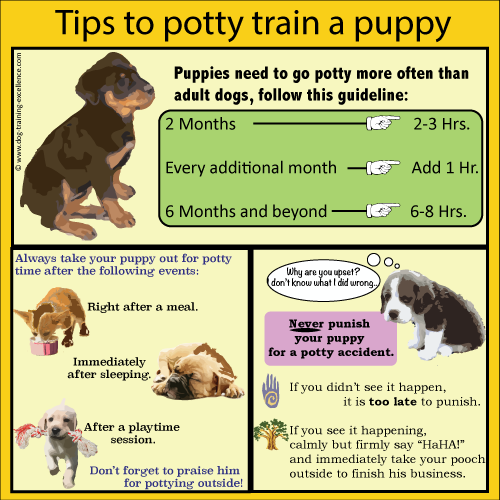 |
The Ultimate Guide to Potty Training your Puppy: Learn how to teach your pooch to pee/poo in the correct place with 100% positive methods. |
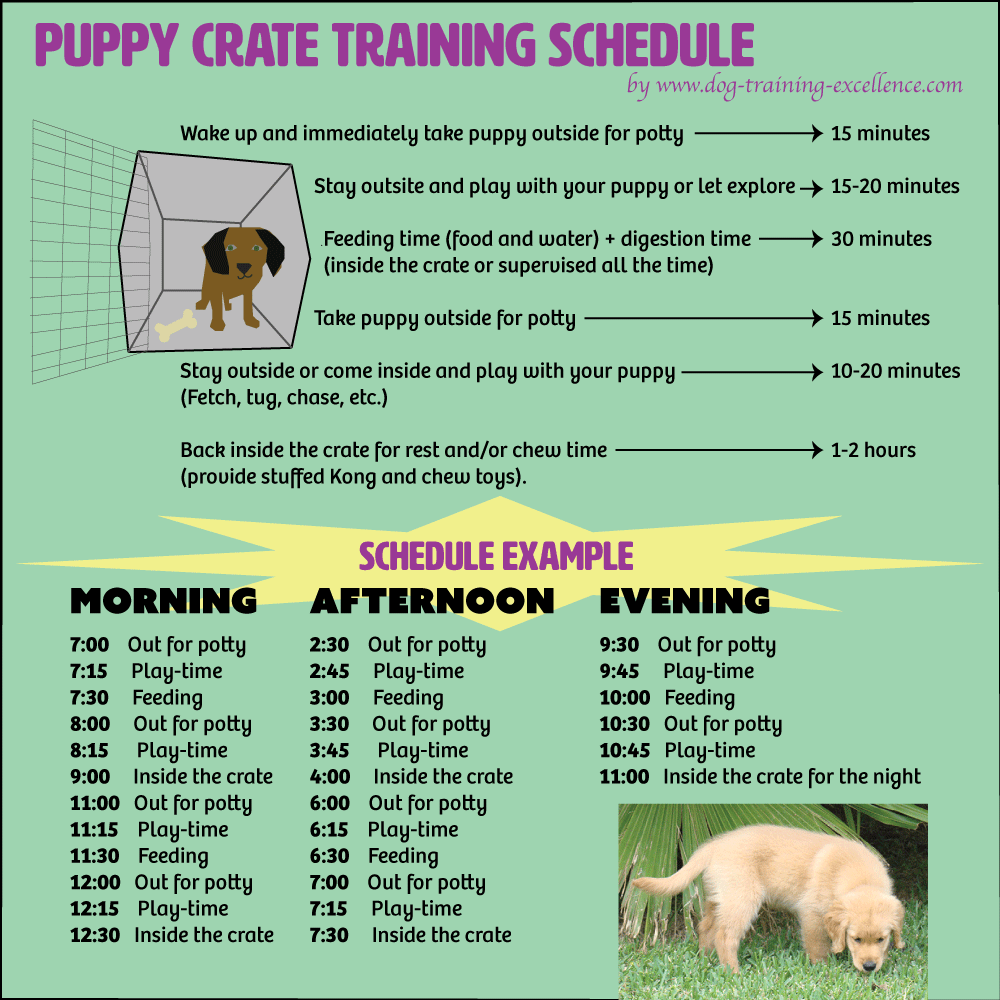 |
Crate Training a Puppy: Crate training your puppy is a great way to help speed up potty training and prevent house destruction. |
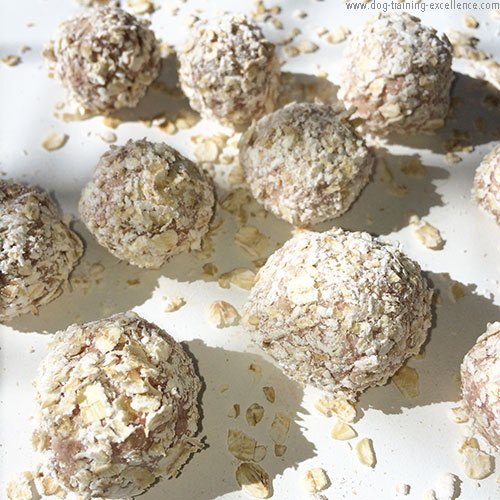 |
Dog treats: Make your own healthy and yummy dog treats to train your puppy. |
Home > Training a puppy dog > Puppy feeding schedule
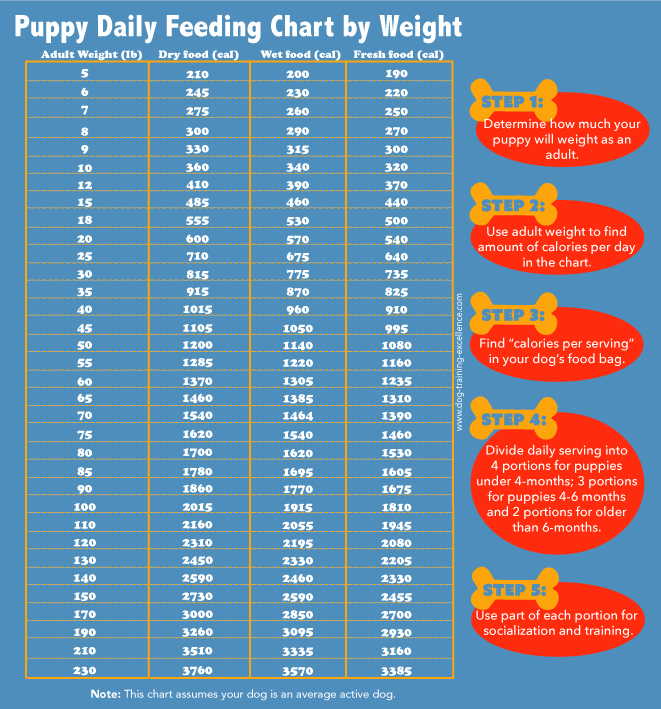
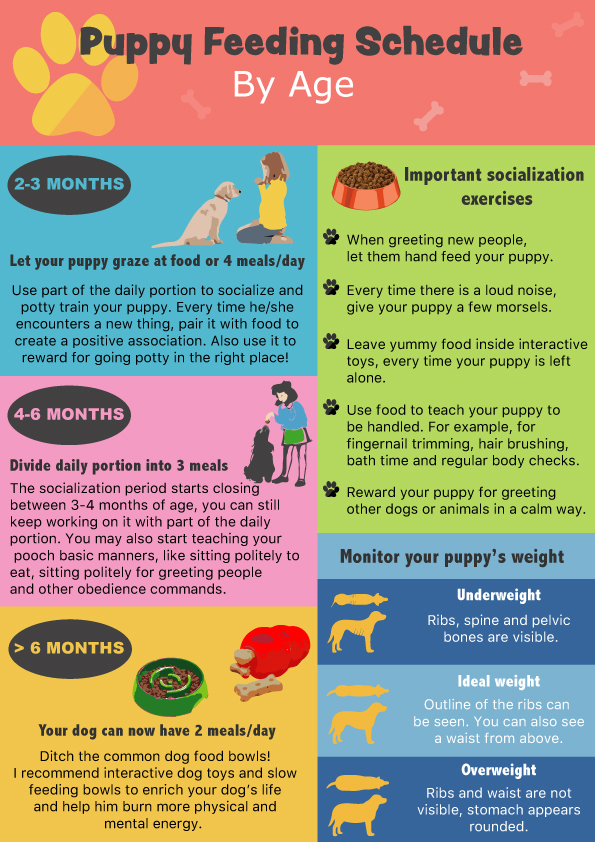

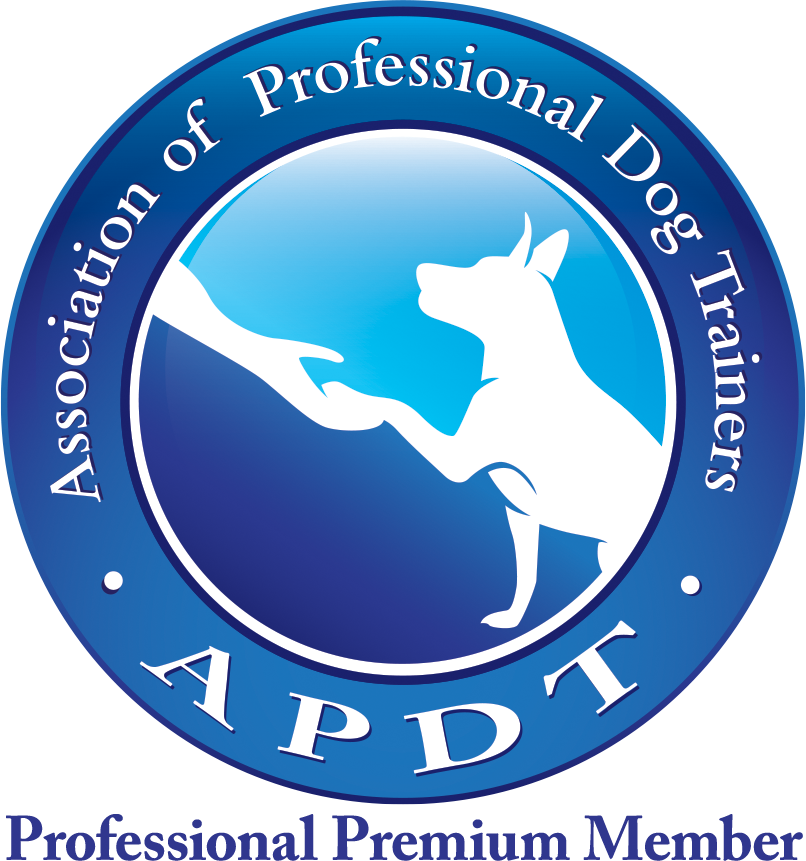
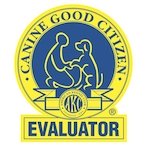

New! Comments
Questions? Anecdotes? Tips? Leave me a comment in the box below.